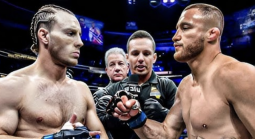Does Golf need a PR makeover?

Recently, Businessweek published a story arguing that golf may be on the way out for the sport of choice for professionals looking to strike deals, and up and comers wanting to project success. CEO and Founder of 5W Public Relations Ronn Torossian dug into that story, and has some PR tips for golf and those who love the game.
According to the story, many young professionals are increasingly beginning to view golf as “time intensive,” and “elitist.” The story goes on to report that this opinion has led to a mass exodus of players from courses, and, as a result, many courses are closing. It’s absolutely true that golf is suffering a loss of popularity. The sport peaked in 2002, and has lost 24% of its players since the salad days. According to Businessweek, in 2013 alone, more than one million players left the course behind.
But, Torossian wonders if perception alone is causing courses to lose tee-times, or could there be additional PR factors? Let’s take a look. Back in 2002, golf was certainly experiencing a PR heyday. Every tournament promised a marquee matchup, usually including golf’s golden boy, Tiger Woods, along with a popular contingent of other personalities such as Phil “Lefty” Mickelson, Jim Furyk, Vijay Singh, and Sergio Garcia. These were elite players that fans could follow from course to course, tournament to tournament. Each in his prime, facing off in nail biters.
Beyond the obvious draw of someone like Woods taking the game by storm, the dynamics of the matchups allowed golf to parlay the drama into PR that had all the trappings of Magic & Bird, or Jordan versus the world. It didn’t hurt that Woods was constantly being compared to His Airness.
Suddenly, golf was not just about elitism and corporate glad handing. Golf was cool. Legions of new fans flocked to the courses to become the next Tiger or Lefty. Then they learned about Payne, and the Shark, and other golf personalities.
Today, the game looks very different. Tiger’s life imploded, and Lefty lost his stroke. People were talking more about Tiger’s mistresses and Lefty’s waistline than their course competition. Nameless, faceless players contend for titles every time. Good for them, but very bad for brand building. Golf no longer has a “face.” Winning public relations needs a good story, and a strong hero. Without that, support will splinter and wane. Those who watch for the love of the game will still watch, but those who tuned in because of the power of the story have left in droves. And, when they stopped watching, they stopped dreaming. For golf to rebound, Torossian says it needs to help people reconnect with the dream.













